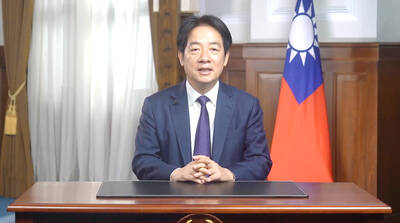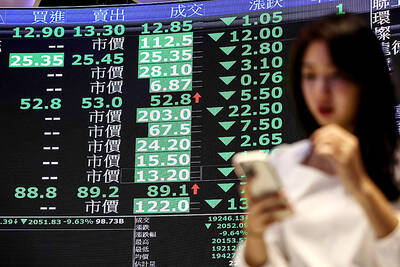Boosting exchanges with India would be prioritized in the government’s New Southbound Policy, as the US is actively engaging India in its Indo-Pacific strategy to counter China’s Belt and Road Initiative, a Cabinet official said on Saturday.
The New Southbound Policy covers 18 nations: the 10 ASEAN members, six South Asian countries, Australia and New Zealand.
Among South and Southeast Asian countries, India is the only one that dares voice its opposition to China, and it is an important actor in the US’ Indo-Pacific strategy, which has prompted the Executive Yuan to pay more attention to the country in its regional and diplomatic work, said the official, who spoke on condition of anonymity.
Many Indian graduates in the areas of science and technology have visited Taiwan for internships or work, with many engineers working in Taiwan’s science parks, the official said, adding that Taiwan and India could further advance talent exchanges in related areas.
However, bilateral interactions this year have been limited due to the COVID-19 pandemic, especially as the outbreak in India remains severe, the official said.
This year’s planned exhibition on Taiwan-India exchanges under the New Southbound Policy has been transformed into a virtual event and delayed until Dec. 16 to 18, the official added.
India-China relations have been tense since soldiers from the two sides clashed along the Line of Actual Control in May.
Repeated attempts by the Chinese embassy in New Delhi to intervene with the Indian media, including a demand that they respect Beijing’s “one China principle” when covering Taiwan’s Double Ten National Day celebrations, have backfired.
Taiwan-India ties are promising, said Minister Without Portfolio John Deng (鄧振中), who manages the New Southbound Policy, when asked about an upsurge of anti-China and pro-Taiwan sentiment in India.
Asked about the Cabinet official’s remark that India ties would be prioritized, Deng said that every country covered by the policy is important and that Taiwan-India relations have greatly improved over the past few years.
Citing an example, Deng said that Taiwan in 2018 renewed a bilateral trade agreement with India following only a year of negotiations.
It shows that New Delhi attaches great importance to Taiwan’s investment environment, as it tends to conduct longer negotiations with other countries before signing an investment agreement, he said.
Taiwan has attracted many high-tech professionals from India, while some Taiwanese tech giants have invested in India, he said.

ACTION PLAN: Taiwan would expand procurement from the US and encourage more companies to invest in the US to deepen bilateral cooperation, Lai said The government would not impose reciprocal tariffs in retaliation against US levies, President William Lai (賴清德) said yesterday, as he announced five strategies to address the issue, including pledging to increase Taiwanese companies’ investments in the US. Lai has in the past few days met with administrative and national security officials, as well as representatives from various industries, to explore countermeasures after US President Donald Trump on Wednesday last week announced a 32 percent duty on Taiwanese imports. In a video released yesterday evening, Lai said that Taiwan would not retaliate against the US with higher tariffs and Taiwanese companies’ commitments to

Intelligence agents have recorded 510,000 instances of “controversial information” being spread online by the Chinese Communist Party (CCP) so far this year, the National Security Bureau (NSB) said in a report yesterday, as it warned of artificial intelligence (AI) being employed to generate destabilizing misinformation. The bureau submitted a written report to the Legislative Yuan in preparation for National Security Bureau Director-General Tsai Ming-yen’s (蔡明彥) appearance before the Foreign Affairs and National Defense Committee today. The CCP has been using cognitive warfare to divide Taiwanese society by commenting on controversial issues such as Taiwan Semiconductor Manufacturing Co’s (TSMC, 台積電) investments in the

HELPING HAND: The steering committee of the National Stabilization Fund is expected to hold a meeting to discuss how and when to utilize the fund to help buffer the sell-off The TAIEX plunged 2,065.87 points, or 9.7 percent, to close at 19,232.35 yesterday, the highest single-day percentage loss on record, as investors braced for US President Donald Trump’s tariffs after an extended holiday weekend. Amid the pessimistic atmosphere, 945 listed companies led by large-cap stocks — including Taiwan Semiconductor Manufacturing Co (TSMC, 台積電), Hon Hai Precision Industry Co (鴻海精密) and Largan Precision Co (大立光) — fell by the daily maximum of 10 percent at the close, Taiwan Stock Exchange data showed. The number of listed companies ending limit-down set a new record, the exchange said. The TAIEX plunged by daily maxiumu in just

‘COMPREHENSIVE PLAN’: Lin Chia-lung said that the government was ready to talk about a variety of issues, including investment in and purchases from the US The National Stabilization Fund (NSF) yesterday announced that it would step in to staunch stock market losses for the ninth time in the nation’s history. An NSF board meeting, originally scheduled for Monday next week, was moved to yesterday after stocks plummeted in the wake of US President Donald Trump’s announcement of 32 percent tariffs on Taiwan on Wednesday last week. Board members voted to support the stock market with the NT$500 billion (US$15.15 billion) fund, with injections of funds to begin as soon as today. The NSF in 2000 injected NT$120 billion to stabilize stocks, the most ever. The lowest amount it